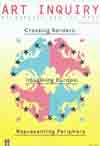The Europe of Minorities. Cultural Landscapes and Ethnic Boundaries
The Europe of Minorities. Cultural Landscapes and Ethnic Boundaries
Author(s): Nicole Dołowy-RybińskaSubject(s): Social Sciences
Published by: Łódzkie Towarzystwo Naukowe
Keywords: linguistic landscape; minority cultures; invented traditions; bilingualism; ethnic borders
Summary/Abstract: The paper deals with the creation of cultural landscapes by European minorities. Looking at the map of European linguistic minorities we observe strong assimilation processes (connected with globalization, new media, a uniformity of lifestyles) resulting in the diffusion of minorities into the dominant culture. It also seems that the presence of minorities in Europe has become increasingly expressive. It is not concealed within the private lives of individuals, but has a strong influence on the creation of cultural landscapes, delimits their space and uses its influence for the promotion of the minority cultures. One can see an increasing number of visual indicators of bilingualism, such as street signs, names of institutions, inscriptions on billboards, etc. Events organized by the minorities, such as picnics, festivals, fairs, etc. are also more noticeable. There is a debate on the actions of civil disobedience (in Wales and in Brittany) and their consequences leading to the implementation of visual bilingualism. The circumstances and results of the introduction in Poland of bilingual signs in the areas inhabited by linguistic minorities – the Kashubs and the Lemkos – are publicly discussed. Finally, the actions taken up by the Kashubs are presented in the media. These actions serve the cultural management of their space and the strengthening of their identity through the invented traditions and cultural engagement. The visual presence of minority languages and cultures in a specific territory create sharper ethnic boundaries.
Journal: Art Inquiry
- Issue Year: 2013
- Issue No: 15
- Page Range: 125-137
- Page Count: 13
- Language: English

